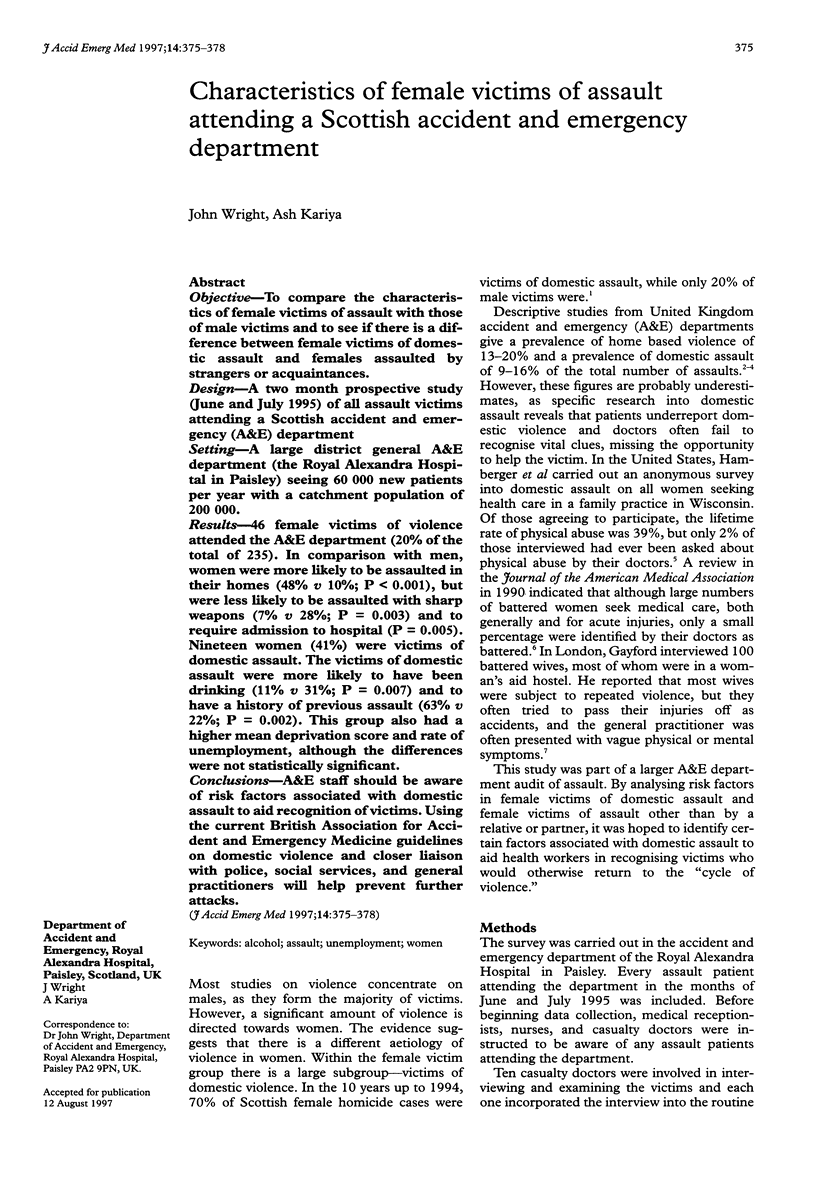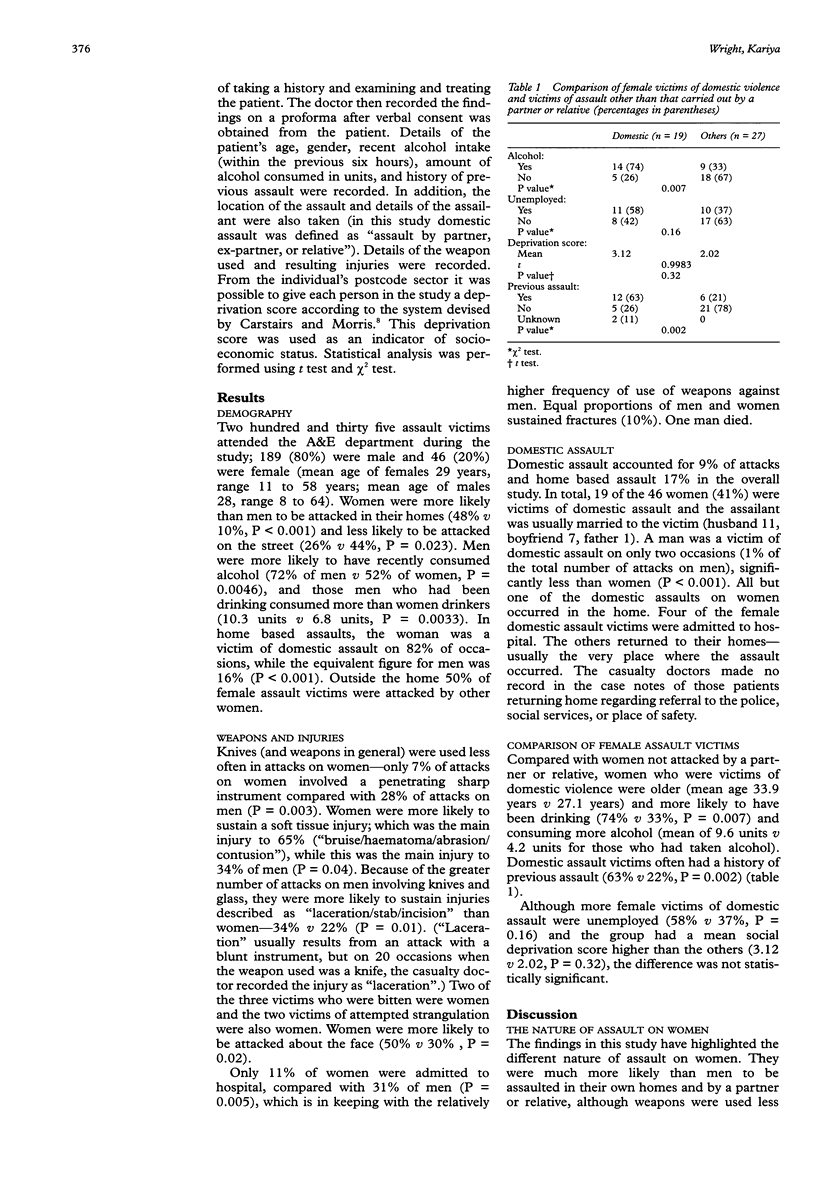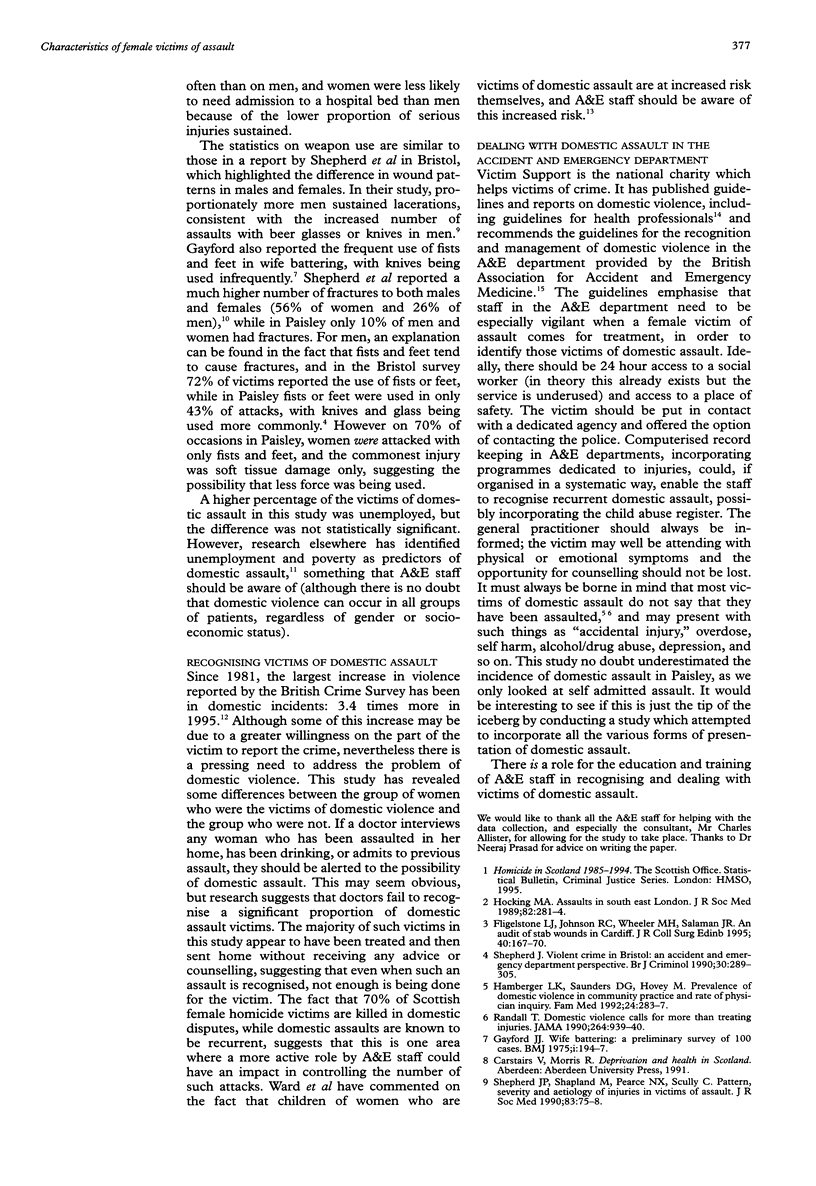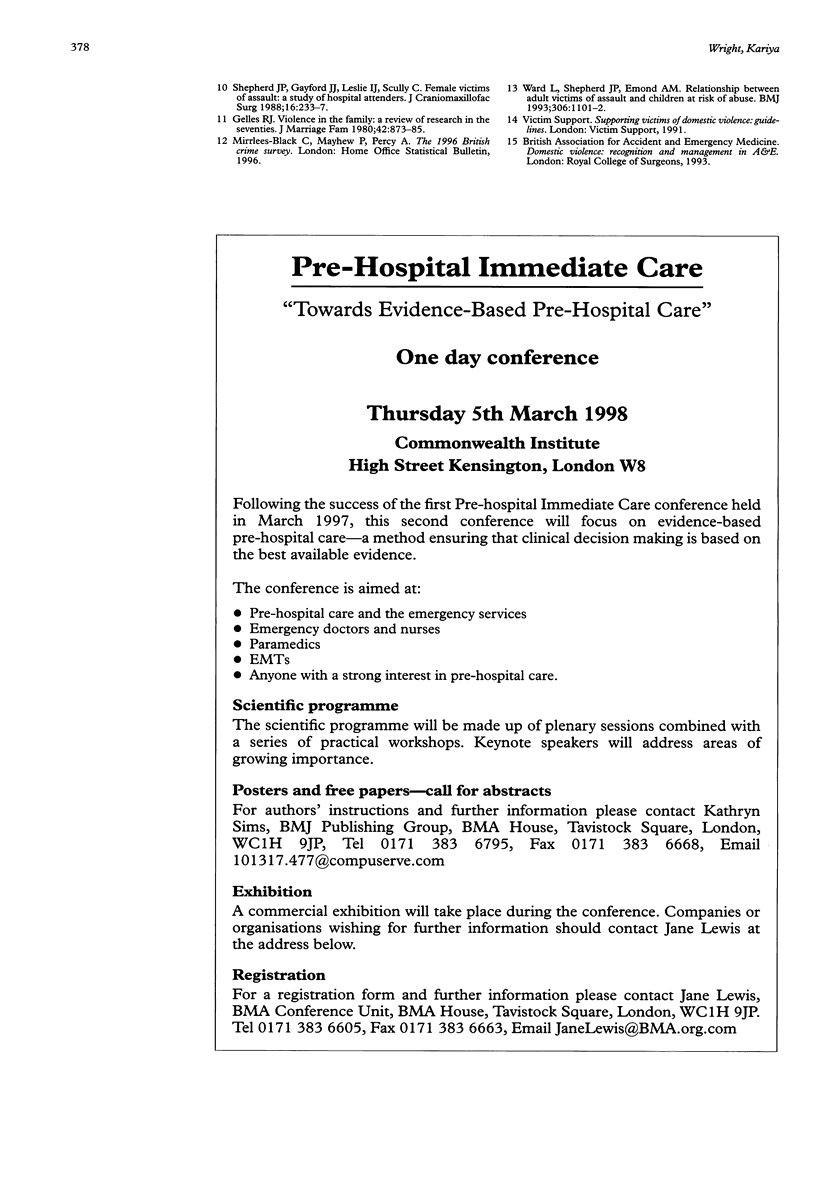Abstract
OBJECTIVE: To compare the characteristics of female victims of assault with those of male victims and to see if there is a difference between female victims of domestic assault and females assaulted by strangers or acquaintances. DESIGN: A two month prospective study (June and July 1995) of all assault victims attending a Scottish accident and emergency (A&E) department. SETTING: A large district general A&E department (the Royal Alexandra Hospital in Paisley) seeing 60,000 new patients per year with a catchment population of 200,000. RESULTS: 46 female victims of violence attended the A&E department (20% of the total of 235). In comparison with men, women were more likely to be assaulted in their homes (48% v 10%; P < 0.001), but were less likely to be assaulted with sharp weapons (7% v 28%; P = 0.003) and to require admission to hospital (P = 0.005). Nineteen women (41%) were victims of domestic assault. The victims of domestic assault were more likely to have been drinking (11% v 31%; P = 0.007) and to have a history of previous assault (63% v 22%; P = 0.002). This group also had a higher mean deprivation score and rate of unemployment, although the differences were not statistically significant. CONCLUSIONS: A&E staff should be aware of risk factors associated with domestic assault to aid recognition of victims. Using the current British Association for Accident and Emergency Medicine guidelines on domestic violence and closer liaison with police, social services, and general practitioners will help prevent further attacks.
Full text
PDF



Selected References
These references are in PubMed. This may not be the complete list of references from this article.
- Fligelstone L. J., Johnson R. C., Wheeler M. H., Salaman J. R. An audit of stab wounds in Cardiff. J R Coll Surg Edinb. 1995 Jun;40(3):167–170. [PubMed] [Google Scholar]
- Gayford J. J. Wife battering: a preliminary survey of 100 cases. Br Med J. 1975 Jan 25;1(5951):194–197. doi: 10.1136/bmj.1.5951.194. [DOI] [PMC free article] [PubMed] [Google Scholar]
- Gordon A., Collin J. Save the normal foreskin. BMJ. 1993 Jan 2;306(6869):1–2. doi: 10.1136/bmj.306.6869.1. [DOI] [PMC free article] [PubMed] [Google Scholar]
- Hamberger L. K., Saunders D. G., Hovey M. Prevalence of domestic violence in community practice and rate of physician inquiry. Fam Med. 1992 May-Jun;24(4):283–287. [PubMed] [Google Scholar]
- Hocking M. A. Assaults in south east London. J R Soc Med. 1989 May;82(5):281–284. doi: 10.1177/014107688908200512. [DOI] [PMC free article] [PubMed] [Google Scholar]
- Randall T. Domestic violence intervention calls for more than treating injuries. JAMA. 1990 Aug 22;264(8):939–940. [PubMed] [Google Scholar]
- Shepherd J. P., Gayford J. J., Leslie I. J., Scully C. Female victims of assault. A study of hospital attenders. J Craniomaxillofac Surg. 1988 Jul;16(5):233–237. doi: 10.1016/s1010-5182(88)80053-2. [DOI] [PubMed] [Google Scholar]
- Shepherd J. P., Shapland M., Pearce N. X., Scully C. Pattern, severity and aetiology of injuries in victims of assault. J R Soc Med. 1990 Feb;83(2):75–78. doi: 10.1177/014107689008300206. [DOI] [PMC free article] [PubMed] [Google Scholar]


